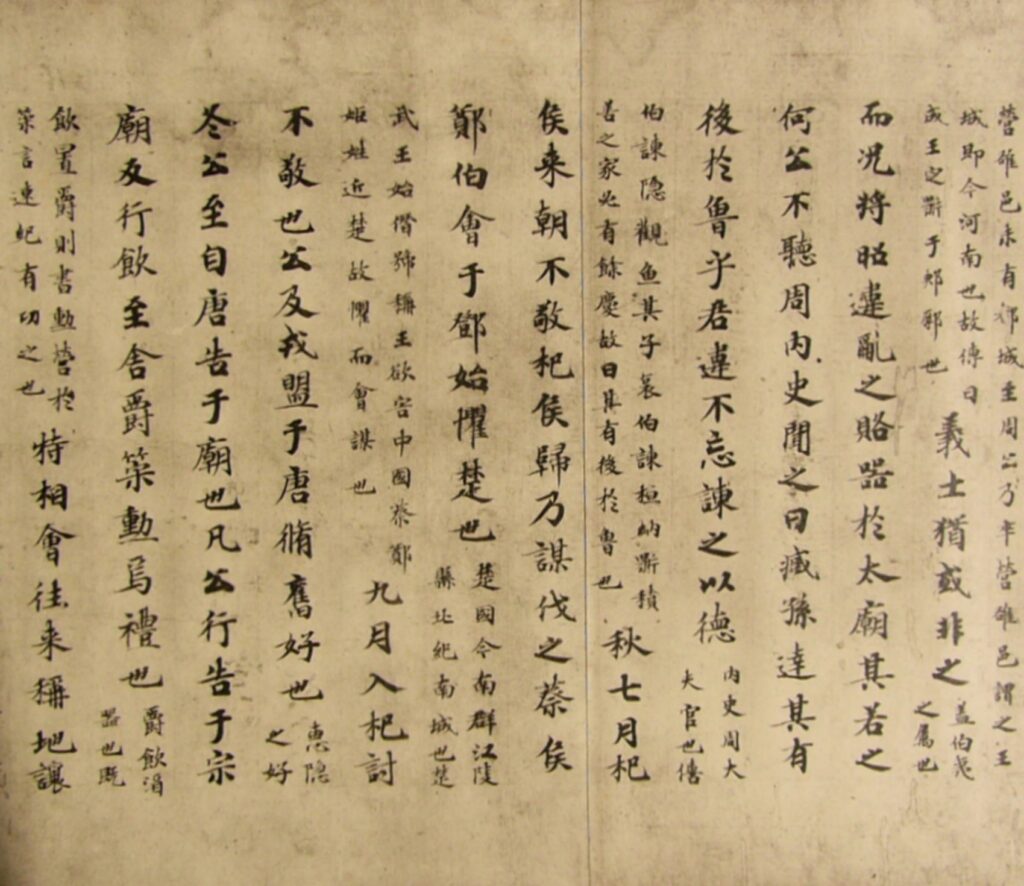What was the Longyuan Sword?
TLDR: The Longyuan sword, forged by Ou Yezi, is one of China’s top ten legendary blades, known for its exceptional sharpness and historical tales.
You know how some swords in stories are just cooler than others? Well, let me tell you about the Longyuan sword – it’s like the rock star of ancient Chinese blades. This isn’t just any old piece of metal; we’re talking about a sword that could supposedly cut through other swords like they were made of cheese. Created by the legendary swordsmith Ou Yezi during the Spring and Autumn Period, the Longyuan sword has a shape that’s said to resemble a high mountain and a deep gulf.
Historical Origins of the Longyuan Sword
The Longyuan sword, one of the most renowned blades in Chinese history, traces its origins to the Spring and Autumn Period (770-476 BC), a time of great cultural and technological advancement in ancient China. This era was marked by significant developments in metallurgy and weaponry, setting the stage for the creation of legendary swords like the Longyuan.
The sword was forged by the legendary swordsmith Ou Yezi, who is considered one of the greatest blacksmiths in Chinese history. According to the “Spring and Autumn Annals of Wu and Yue,” Ou Yezi was a native of the State of Yue and lived during the late Spring and Autumn Period, extending into the early Warring States Period. His expertise in metalworking led to groundbreaking discoveries, particularly in differentiating the properties of copper and iron.
Ou Yezi’s quest to create the perfect sword led him on a journey across the southern regions of the Yangtze River. He searched for three crucial elements: a source of iron, cold springs, and bright stones, all necessary for forging an exceptional blade. After two years of meticulous work, Ou Yezi successfully crafted three remarkable swords, with the Longyuan being the first and most famous among them.
The creation of the Longyuan sword involved:
- Sourcing high-quality iron
- Utilizing cold spring water for quenching
- Employing bright stones for polishing and sharpening
- Applying advanced forging techniques
Physical Description of the Longyuan Sword
The Longyuan sword, renowned for its exceptional craftsmanship, possesses a distinctive appearance that sets it apart from other legendary Chinese blades. Its most striking feature is its shape, which is said to resemble both a high mountain and a deep gulf. This unique form is not merely aesthetic but is believed to embody the sword’s power and mystical properties.
The blade’s contours are described as ethereal and profound, evoking the image of viewing a valley where a huge dragon resides from a great height. This description aligns with the sword’s name, Longyuan, which translates to “Dragon Gulf” or “Dragon Abyss”. The intricate design creates an optical illusion, giving the observer a sense of depth and grandeur when examining the sword.
The Longyuan sword’s surface is adorned with unique patterns that contribute to its legendary status. While specific details of these patterns are not extensively documented in the available sources, it’s likely that they were created using advanced metalworking techniques of the time. The sword’s appearance is said to be so captivating that it seems to shimmer in daylight and glow in the evening.
| Attribute | Description |
| Shape | Resembles a high mountain and deep gulf |
| Surface | Unique patterns, possibly resembling dragon scales |
| Appearance | Ethereal and profound, shimmering in light |
| Symbolism | Evokes the image of a dragon in an abyss |
Magical Properties of the Longyuan Sword
The Longyuan sword, renowned in Chinese mythology, is said to possess extraordinary magical properties that set it apart from ordinary blades. While historical accounts of its capabilities may be exaggerated, they speak to the reverence and awe this legendary weapon inspired.
One of the most notable attributes ascribed to the Longyuan sword is its exceptional sharpness and durability. Legends claim that the blade could maintain its edge through countless battles without dulling, a testament to the advanced metallurgical techniques supposedly used in its creation. This exceptional sharpness was said to be so extreme that the sword could slice through water and emerge perfectly dry, an impossible feat that nonetheless captures the imagination.
The Longyuan sword’s reputed ability to cut through metal as if it were mud further emphasizes its mythical status. This property, while clearly hyperbolic, may have roots in the sword’s actual superior craftsmanship. The blade was likely forged using high-quality steel and advanced heat-treatment methods for its time, resulting in a weapon that could indeed outperform many contemporary swords in terms of cutting ability and durability.
Key magical properties attributed to the Longyuan sword include:
- Unparalleled sharpness that never dulls
- Ability to cut through seemingly impenetrable materials
- Mystical glow in daylight and evening
| Property | Description |
| Sharpness | Maintains edge indefinitely, can cut water |
| Cutting power | Slices through metal with ease |
| Appearance | Shimmers in daylight, glows in evening |
The Longyuan Sword in Ancient Texts
The Longyuan sword, later known as the Longquan sword, features prominently in several ancient Chinese texts, providing valuable insights into its legendary status and historical significance. One of the most notable mentions comes from the “Spring and Autumn Annals of Wu and Yue,” a historical text that chronicles the events of the Wu and Yue states during the Spring and Autumn period.
In this text, the creation of the Longyuan sword is attributed to the master swordsmith Ou Yezi. The annals recount how Ou Yezi traveled across the southern regions of the Yangtze River in search of three crucial elements: iron ore, cold springs, and bright stones. These components were deemed essential for forging an exceptional blade. After a two-year journey, Ou Yezi arrived in Longquan and successfully crafted three remarkable swords, with the Longyuan being the first and most renowned among them.
Other historical records also reference the Longyuan sword, further cementing its place in Chinese mythology and history. The “Yuejue Shu” (Lost Records of the State of Yue) provides a detailed account of the sword’s creation, describing how the King of Chu commissioned Ou Yezi to forge these exceptional blades. This text elaborates on the sword’s extraordinary cutting abilities, claiming it could slice through metal as easily as mud.
| Text | Key Information |
| Spring and Autumn Annals of Wu and Yue | Ou Yezi’s journey and sword creation |
| Yuejue Shu | King of Chu’s commission and sword’s abilities |
| History of Baiyue Sages | Naming of Longyuan and its significance |
| Book of Yue Jue | Detailed account of sword forging process |
Legendary Tales Involving the Longyuan Sword
The Longyuan sword, also known as the Longquan sword, features prominently in several legendary tales that highlight its significance in Chinese history and mythology. One of the most notable stories involves King Goujian of Yue, who used the sword in a dramatic act of self-punishment.
According to the “Spring and Autumn Annals of Wu and Yue,” King Goujian once used the Longyuan sword to cut a gash in his own thigh as a form of self-punishment. This act was reportedly carried out after the king mistakenly executed an innocent person. The tale demonstrates not only the sharpness and effectiveness of the Longyuan sword but also the king’s sense of justice and willingness to accept personal responsibility for his actions. This story has become a powerful symbol of leadership and accountability in Chinese culture.
The Longyuan sword is also intrinsically connected to the founding of Longquan’s sword-making tradition. Legend has it that the master swordsmith Ou Yezi, considered the creator of the Longquan sword, settled in the mountains of Longquan over 2,500 years ago during the Spring and Autumn Period (770-476 BC). Ou Yezi’s quest for the perfect location to forge exceptional swords led him to Longquan, where he found the ideal combination of iron ore, cold springs for quenching, and suitable stones for grinding blades.
After three years of meticulous work, Ou Yezi created three legendary swords: Longyuan, Tai’e, and Gongbu. The Longyuan sword, named after the area where it was forged, was said to have a shape that resembled a view from a high cliff looking down into a deep abyss, hence its name meaning “Dragon Abyss”. This founding myth established Longquan as the birthplace of Chinese sword-making and set the stage for its enduring legacy in blade craftsmanship.
Key elements of the Longyuan sword legends:
- King Goujian’s self-punishment
- Ou Yezi’s quest and settlement in Longquan
- Creation of the three legendary swords
- Establishment of Longquan’s sword-making tradition
Final Thoughts
After exploring the lore of the Longyuan sword, I’m more convinced than ever that this blade holds a unique place in history. While some might dismiss it as mere legend, I believe there’s likely a kernel of truth to its story. Perhaps the ancient Chinese truly mastered extraordinary metalworking techniques that have since been lost to time. Or maybe the Longyuan sword serves as a symbol of something greater – the artistry and ingenuity behind the different types of Chinese swords, which continue to captivate us with their rich history and cultural significance.

